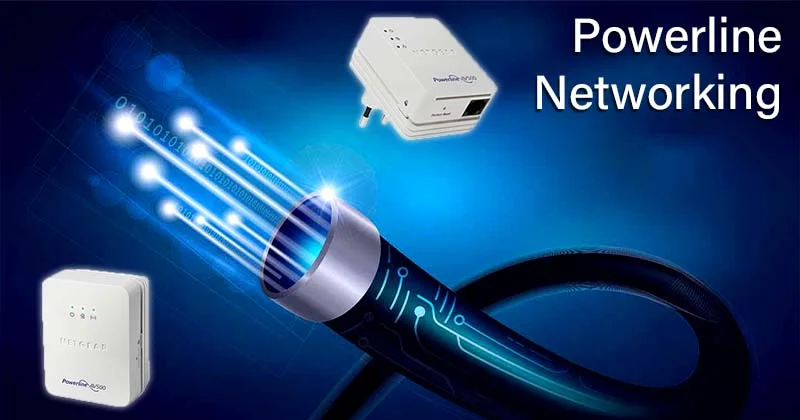Powerline networking technology is a dynamic and innovative approach to extending your home network. It’s an ideal solution for those seeking to eliminate Wi-Fi dead spots and avoid the challenges of running Ethernet cables through walls.
In this guide, we’ll explain the powerline networking, discussing its applications, advantages and potential limitations. Till the end of this article, you’ll have a clear understanding of powerline networking & how this technology can enhance your home network.
What is Powerline Networking Technology?
Powerline networking is a groundbreaking approach that uses the existing electrical wiring within your home to establish network connections. It utilizes adapters designed to plug into standard electrical outlets, creating a seamless network infrastructure. These adapters facilitate a network connection to your router or other network devices through your electrical wiring, eliminating the need for additional physical cabling.
How Does it Work?
The beauty of powerline networking lies in its simplicity. Unlike traditional wired networks that often demand intricate installations, powerline networking can be set up within minutes.
Just plug in the adapters, connect the network cable to your device and you’re ready to enjoy a stable and secure network connection.
Benefits of Powerline Networking Technology
Powerline networking technology offers a multitude of advantages for users seeking to expand their home network:
1. Cost-Effective Network Expansion
Say goodbye to the expensive and time-consuming process of running Ethernet cables throughout your home. Powerline networking offers an affordable solution for network expansion without the use of additional cabling.
2. Reliable and Stable Connection
Unlike wireless networks that can suffer from interference and signal loss, powerline networking provides a consistent and dependable connection, making it ideal for online gaming and high-bandwidth streaming.
3. Flexibility and Scalability
Powerline networking is incredibly flexible, allowing you to easily extend your network to different areas of your home by adding more adapters to your existing setup, tailoring the network to your specific needs.
4. Enhanced Security
In a world where network security is paramount, powerline networking offers a more secure option compared to Wi-Fi. It provides a secure and encrypted connection that’s less susceptible to unauthorized access.
Limitations of Powerline Networking Technology
While powerline networking technology is a compelling solution, it does have certain limitations to consider:
- Dependent on Electrical Wiring: The performance of powerline networking can be influenced by the quality and age of your home’s electrical wiring. Older homes with outdated or poorly maintained wiring may not achieve the same level of performance as newer homes.
- Susceptible to Electrical Interference: Powerline networking can be affected by electrical noise from other devices in your home. This interference can lead to reduced performance and slower speeds, especially in areas with high electrical interference.
- Distance Between Adapters: The signal strength of powerline networking depends on the distance between adapters. The farther apart they are, the weaker the signal may be, potentially resulting in lower speeds or connectivity issues.
- Speed vs. Ethernet: While powerline networking offers a stable and reliable connection, it may not match the speed and bandwidth capabilities of traditional Ethernet cabling.
Enhancing Your Home Network
The powerline networking technology offers a practical and cost-effective solution for expanding your home network. Its user-friendly setup & reliability makes it an attractive option for individuals seeking to establish a wired network; without the complexities of traditional cabling.
While it’s essential to acknowledge its limitations, such as potential issues with older electrical wiring and interference, powerline networking technology remains a versatile choice for those looking to bolster their home network.



